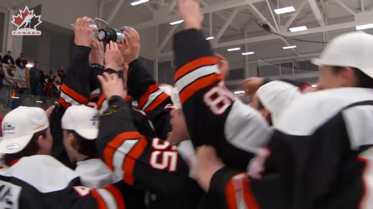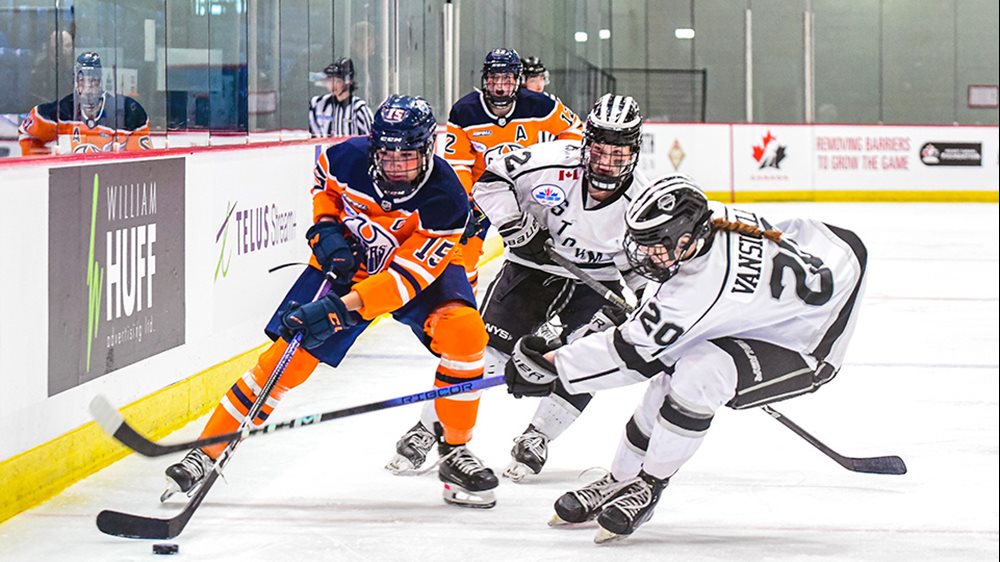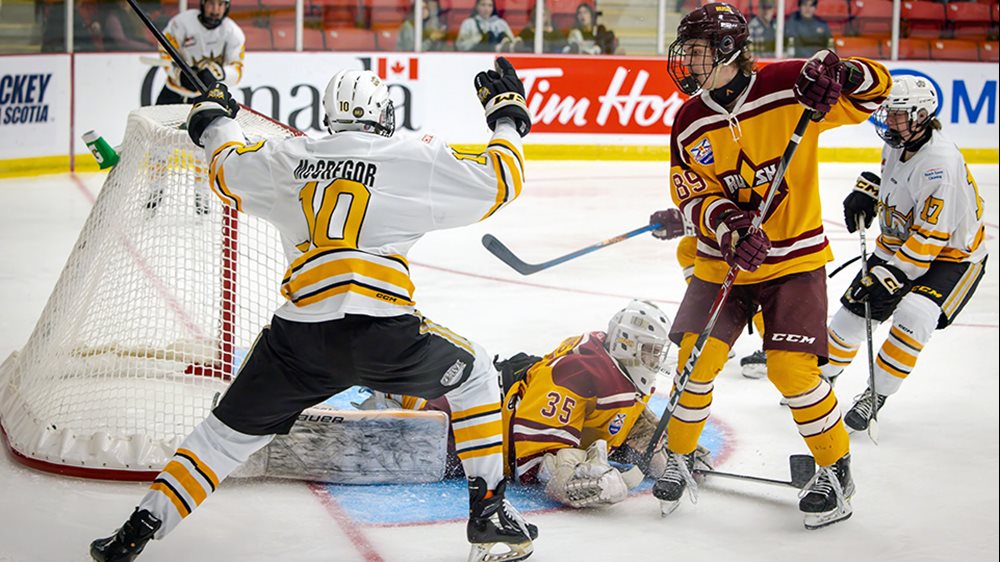
My father, my friend
Few have matched what Guy Lafleur accomplished on the ice, but for his son, his lasting legacy isn’t as a Montreal Canadiens legend – it’s simply as ‘Dad’
The view of life through a child’s eyes often conjures a unique perspective. It’s usually an untainted lens of innocence and fondness with a charming projection.
For Martin Lafleur, that sentiment is not only an adolescent image of his father growing up but a realistic picture of the journey they shared together for over four decades.
As the oldest of the two sons of Montreal Canadiens great Guy Lafleur, Martin was more than just a son to his father; they were business partners, teammates and – most of all – great friends.
Lafleur’s admiration for his dad was absolute. It wasn’t just about having a famous hockey-playing father, but also appreciating the family man he was to his mother, Lise, and younger brother Mark.
“The hockey player is something that’s been part of our family, our lives,” says Martin, 47. “But it’s more of the human part that’s always been pretty remarkable to observe about my dad.”
Guy Lafleur spent 17 seasons in the National Hockey League, most notably with the Canadiens, but also with the New York Rangers and Quebec Nordiques, from 1971 to 1991.
He won five Stanley Cups with the Habs (1973, 1976, 1977, 1978 and 1979) and was the first player in NHL history to score 50 goals in six consecutive seasons, as well as 50 goals and 100 points six years in a row.
On the ice, Lafleur was special. He was a superstar among a constellation of hockey icons the Canadiens produced in abundance during that era.
He especially electrified fans at the Montreal Forum for 14 seasons with his blazing speed and exquisite shot and terrified the opposition with his tremendous skating, offensive skill and elusiveness.
Over his career, the Thurso, Que., product was named a first-team all-star six times and was awarded the Art Ross Trophy (3x), Hart Trophy (2x), Lester B. Pearson Award (now Ted Lindsay Award) (3x) and Conn Smythe Trophy. He was inducted into the Hockey Hall of Fame in 1988 and was voted as one of the 100 Greatest NHL Players in 2017.
It is not hyperbole to suggest Lafleur was beloved by countless hockey fans globally and even highly respected by those that cheered against his teams.
But to Martin Lafleur, his father was not just defined as a hockey player. Sure, the game made him famous, but his personal impact to everyone around him was broader than a singular definition of character.
Away from the rink, Lafleur was charitable and philanthropic, often visiting youngsters at children’s hospitals and donating thousands of dollars to the Montreal Canadiens Children’s Foundation.
In retirement he was still as popular as ever, especially in Quebec, where he was revered. According to Martin, his dad was often approached by fans to pose for pictures and selfies, and asked for autographs – which he never refused.
“He’s a people person,” says Martin, who owns and operates a company called Dello, a Montreal-based cryptocurrency payment processing business.
“Even though he’s had a lot of success in his hockey career and been at the top of his game, he’s always been that down-to-earth guy and somebody when you talk to him, you have his full attention.”
Lafleur was so popular and charismatic as an athlete and in life that he was bestowed not one, but two, nicknames over his career.
The first, “The Flower” is a direct English translation from his French last name, but also metaphorically illustrated his radiant presence on the ice and in life.
The other was “Le Demon Blond,” which Martin says doesn’t translate very well in English, but loosely evokes the image many of us remember of Guy Lafleur skating at lightning speed down the right-wing boards with his helmetless blonde hair flowing in the breeze.
Both nicknames were used often but segregated for the crowd in which he was present – The Flower mostly amongst close friends and teammates and Le Demon Blond – which Martin admits is his favourite – by fans.
Born in 1975 at the height of his father’s storied career and now a husband and father himself, Martin said he always tangibly understood what his dad meant to hockey, the Canadiens and his fans, but never truly felt the depth of what he portrayed until the public memorial service to honour his dad’s passing at the Bell Centre this spring.
Guy Lafleur died April 22 at the age of 70.
“I saw people were sad,” Martin Lafleur admits. “That’s when I realized the impact he had on the human side and how he touched people.
“People weren’t telling me hockey stories. They were sharing life stories. That’s what really amazed me. Unfortunately, I had to fully grasp that through the scenario of my dad’s passing.”
One story that resonated strongly in this regard was from another father that shared his admiration of the former first-overall pick of the Canadiens in 1971.
Martin said the man was inspired by his dad for the way Guy handled and supported his youngest son, Mark, who over a 10-year period ran afoul with the law on more than one occasion.
Again, the family-first person that he was, Lafleur stood behind his son through the legal strife and proceedings, even challenging some of the legalities in court himself.
At Lafleur’s celebration of life service, Martin delivered part of the eulogy to his father. It was an emotional, heartfelt and concise description of his dad’s impact on the world.
Moreover, that articulate expression will likely serve as a precursor to Martin accepting the Order of Hockey in Canada on his father’s behalf this month.
As one of three Distinguished Honourees for 2022, Lafleur will be recognized for his outstanding contributions to the sport at the annual Hockey Canada Foundation Gala & Golf in Niagara Falls, Ont.
And while the honour will be presented posthumously, Lafleur was informed of the prestigious distinction prior to his death, an accolade Martin says his father was deeply touched and privileged to receive.
“We value our province and our country,” says Martin. “It’s such a great honour for our family. We’re more than appreciative to get this acknowledgement on his behalf.”
The Order of Hockey in Canada and the lead-up to its formal presentation will undoubtedly stir many memories for the Lafleur family, especially Martin.
From the time he was born amid the Canadiens’ incredible run of four straight Stanley Cups between 1976 and 1979 to the conclusion of his dad’s career in 1991, he spent many hours around hockey rinks, including the Montreal Forum, New York’s Madison Square Garden and Quebec City’s Le Colisée – the three NHL stops in Guy’s career.
Of course, those years were all tied to his dad’s hockey career, but Martin was brought to the rink on many occasions, hanging out with other Canadiens players and their kids, and skating with them before or after practice. He attended team golf tournaments and eventually played with the Habs alumni team.
Those interactions from an early age helped off-set some of the time he missed with his dad as travel in the NHL often prevents consistent home time during the season.
“There were a lot of years in my youth that I saw him more on TV than I did in real life,” says Martin. “It was his after-career that allowed me to really spend time with him. I had fabulous moments as a child, but I had a lot more of them after he retired. That was very important to me.”
Hockey was meaningful to Guy Lafleur and his family, but it wasn’t imperative to him that his boys followed the same path. Sure, Martin played the game growing up and still does, although he admits his drive and passion for other sports like snowboarding and soccer internally created more drive and passion.
“Sports were always a huge part of my life, but hockey was just one of them,” Martin says. “My dad never really pushed us. Whatever we decided to do he just wanted us to enjoy it.”
He says Guy was never much on providing pointers during his minor hockey days and jovially mentions his dad “was awful as a hockey coach.”
However, by the time the two were able to play together during Montreal Canadiens alumni events, Martin says skating with his father as a teammate was a great experience, although the senior Lafleur was also “very capable” of telling you if you did something wrong.
When his hockey career concluded and right up until his final day, Guy Lafleur was a busy guy.
He and Martin were involved in business together, including several restaurants, while they both attended many events like sports card and memorabilia shows, where for close to the last decade Martin acted as his father’s de facto agent, organizing travel and attending those work/play events together.
“We’ve had a really close relationship. I’m so grateful to have spent that quality time with him.”
Lafleur was also very patriotic. He was an honorary colonel in the Canadian Air Force, making several trips to support Canadian Forces in places like Kuwait, Afghanistan and Ukraine. He was proud to represent his country at the Canada Cup in 1976 and 1981, and again at the 1981 IIHF World Championship.
And among the other notable honours and awards bestowed on him, Lafleur was also made an Officer of the Order of Canada and a Knight of the National Order of Quebec.
“Both were huge honours,” says Martin. “My dad was French-Canadian, but he was so proud to be Canadian.”
To Martin, his dad’s legacy stands alone, but he’ll try to conduct himself appropriately and use it as a template for his future.
“Those shoes are unfillable,” he says. “But I definitely want to do as much as I can to continue what my dad did in my own way. That’s the way we were brought up. We still owe everything to my dad’s fans. With pleasure, that’s something that will continue.”
For more information: |
- <
- >

























